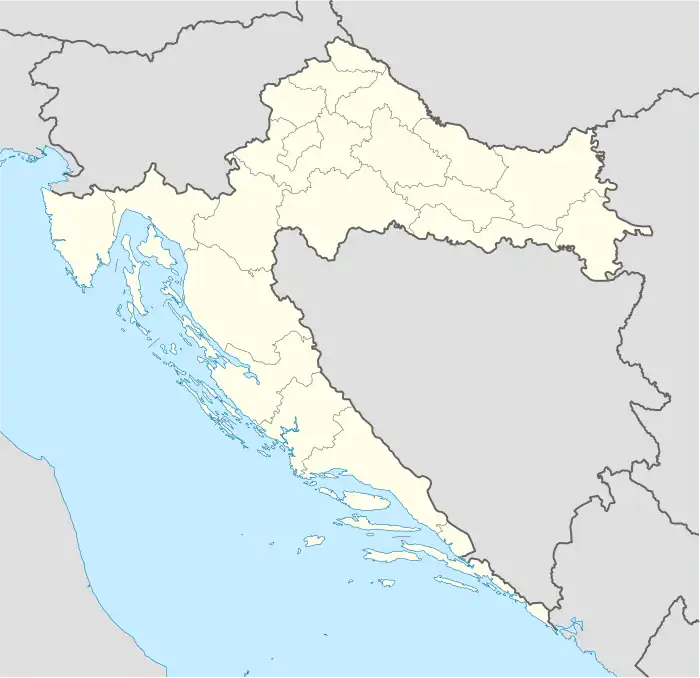 | |
 Shown within Croatia | |
| Coordinates | 45°20′10″N 19°03′36″E / 45.336°N 19.06°E |
|---|---|
Vučedol (lit. 'Wolf's Valley') in Croatia, is an archeological site, an elevated ground on the right bank of the River Danube, which also forms the border with Serbia. Vučedol became the eponym of the eneolithic Vučedol culture.
It is estimated that the site had once been home to about 3,000 inhabitants, making it one of the largest and most important European centers of its time.[1]
Artifacts from the Vučedol site are located in the Archaeological Museum in Zagreb, and the City museum of Vukovar. The site itself hosts the Vučedol Culture Museum since 2015.
Due to extremely favourable strategic position, Vučedol has always been open to colonization. During the Copper Age, the settlement extended across most of the present-day archaeological site, covering an area of approximately 3 hectares (7.4 acres). The site is considerably larger than contemporary sites which indicates that it must have been a regional economic and social center. Some of the most important archaeological discoveries belonging to the Vučedol culture have been made at this site.
Archaeological research has confirmed finds of Baden culture, Vučedol culture as well as Kostolac culture on the site of Vučedol.[2]
The highest part of the site at Vučedol was separated from the rest of the settlement by two parallel ditches. These ditches enclosed a large rectangular structure that was considerably larger than the houses located in surrounding residential areas, and this area also produced the only evidence of copper smelting on the site. Some scholars had argued that this part of the settlement may have been occupied by a local elite that exercised control not only over Vučedol but also over the production and exchange of precious goods and that dominated the smaller settlements in the area.
The site is located roughly 5 kilometres (3.1 mi) downstream from the city of Vukovar. During the Battle of Vukovar in 1991, the Vučedol site was destroyed by being used as a firing base for the Serbian Yugoslav People's Army artillery and tanks in the three-month bombardment of Vukovar.[3] The site was since restored and the Vučedol Culture Museum established on the grounds.
References
- ↑ Bogdan Brukner, "Balkan i srednja Evropa u praistoriji - sličnosti i razlike u razvoju", Novi Sad, 1992, page 26.
- ↑ Balen, Jacqueline (2005). "The Kostolac horizon at Vučedol". Opvscvla archaeologica. Department of Archaeology, Faculty of Humanities and Social Sciences, University of Zagreb. 29 (1): 25–40. ISSN 0473-0992. Retrieved 2022-06-15.
- ↑ Kaiser, Timothy (1995). "Archaeology and ideology in southeast Europe". In Kohl, Philip L; Fawcett, Clare P (eds.). Nationalism, politics, and the practice of archaeology. Cambridge University Press. p. 118. ISBN 978-0-521-55839-6.